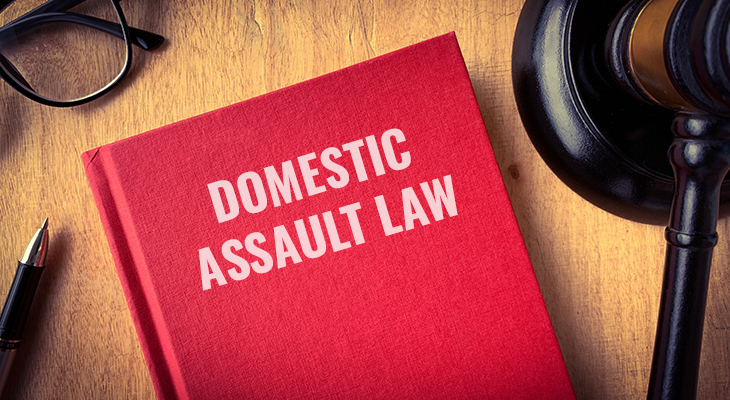
Facing domestic assault charges can be overwhelming, especially when strict legal restrictions are imposed before trial. One of the most disruptive of these restrictions is the no-contact order, often included as a condition of release (bail).
While designed to protect complainants, these orders can deeply affect an accused person’s daily life, housing, parenting, and ability to prepare a defence.
This blog explains how no-contact orders affect domestic assault defence, covering their legal basis, enforcement, impact on defence strategies, and options to modify them. All information is specific to Canadian and Alberta law to help individuals charged with domestic assault understand their rights and obligations.
No-Contact Orders In Domestic Assault Cases
A no-contact order is a condition prohibiting any communication with a named person, typically the complainant. It is commonly imposed as part of a release order (bail) under section 515(4.2)(a) of the Criminal Code of Canada. It may also be included later as part of a probation order under section 732.1(3).
When Are No-Contact Orders Imposed?
No-contact orders are most often issued:
- By the police on release from custody after an arrest
- At a judicial interim release (bail) hearing under s. 515
- As part of probation after a conviction
- In a peace bond under section 810 of the Criminal Code
The Crown usually seeks these orders automatically in domestic cases, citing the complainant’s safety and the integrity of the justice process.
The Legal Effect Of No-Contact Orders On Domestic Assault Defence
Scope Of The Prohibition
A standard no-contact order bans all direct and indirect contact, including:
- In-person interaction
- Phone calls, texts, emails
- Social media messages
- Messages sent through friends or relatives
Most include a geographic condition requiring the accused to stay a set distance (for example, 100 or 500 metres) from the complainant’s home, workplace, or other places they frequent.
Breaching A No-Contact Order Is A Criminal Offence
Breaching a release order is a standalone offence under section 145(5) of the Criminal Code. Breaching a probation order is covered under section 733.1, and breaching a peace bond is covered under section 811. Even accidental or indirect contact can result in immediate arrest and new charges.
The Supreme Court of Canada in R. v. Morales, [1992] 3 S.C.R. 711 emphasized that bail restrictions must be specific, necessary, and justifiable. Once imposed, they are legally binding until a court changes them.
How No-Contact Orders Complicate Domestic Assault Defence
Blocking Access To Shared Homes And Children
If the accused and the complainant live together, a no-contact order usually forces the accused to move out immediately. This can cause major financial stress and disrupt parenting arrangements.
Courts sometimes allow third-party contact for child-related matters, but this must be requested formally through a variation.
Hindering Evidence Collection
Domestic assault defence often relies on communications, witness statements, or contextual history. No-contact orders block the accused from gathering this evidence directly, requiring defence lawyers to use disclosure processes or apply to the court for limited communication permissions.
Increasing Pressure To Plead Guilty
Severe restrictions can pressure some accused individuals to plead guilty just to regain contact with their families. However, a premature guilty plea creates a permanent criminal record and long-term consequences. A skilled defence lawyer can help vary the order so the defence can proceed without coercive pressure.
How To Change Or Remove A No-Contact Order
Consent Variations Under Section 519.1
If all parties agree, the accused can seek a consent variation under section 519.1 of the Criminal Code. This allows release conditions, including no-contact orders, to be changed on paper with written consent from:
- The accused
- The Crown prosecutor
- Any sureties involved
This is the simplest way to allow controlled contact for parenting or logistical issues.
Bail Review Under Section 520
If the Crown will not consent, the accused can request a bail review under section 520 before a superior court judge. The court must be convinced that the change will not endanger the complainant or the justice process. Evidence of compliance and changed circumstances is usually required.
After An Acquittal, Stay, Or Withdrawal
If the charge is withdrawn, stayed, or results in an acquittal, the release order ends and the no-contact condition lapses. If the order is part of a probation sentence, it stays in effect until the probation period ends or the court varies it under section 732.2(3.1).
Practical Guidance For Accused Individuals
- Follow the order strictly, even if the complainant initiates contact. Only a court can change it.
- Keep records proving where you live, especially if forced to move out.
- Use a lawyer to seek variation if the order disrupts parenting, work, or property access.
- Communicate through a lawyer or designated third party if child arrangements must be discussed.
- Avoid indirect contact on social media, which can still breach the order.
Early legal representation is essential. A domestic assault defence lawyer can apply to vary conditions, protect your rights, and build a stronger defence while keeping you in full compliance with the law.
About Slaferek Law
Slaferek Law is a criminal defence law firm based in Edmonton, Alberta, focusing on defending individuals charged with serious offences such as domestic assault and sexual assault. With a deep understanding of Alberta’s criminal justice system, Slaferek Law delivers strategic, personalized defence to protect your rights and your future.
If you are facing domestic assault charges or struggling with a no-contact order, contact us today for a confidential consultation.
